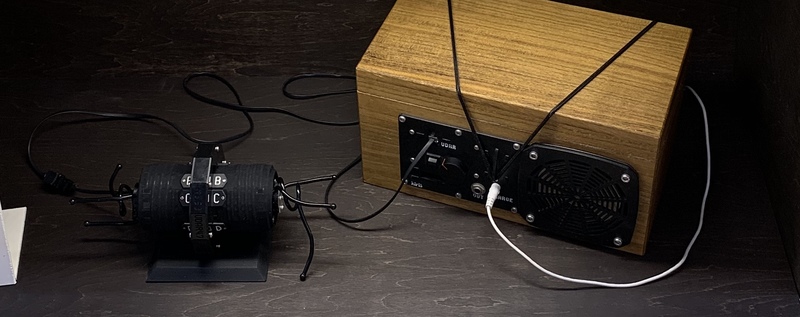Interviews

UDAR: A New Frontier in Electronic Instruments (Part 2)
Michinobu Uda
Michinobu Uda is the inventor of the original electrical instrument UDAR. In part 2, we take a look at the overall development of the revolutionary device.
Interviewer & Japanese Writer: Yamamoto Takaya; Translation & Editing: Matthew Cherry
Hands-on with the Udar as featured alongside other InnoUvators
Michinobu Uda was selected for the 2015 INNO-vation Program’s Disruptive Challenge to further develop the original electrical instrument UDAR. The first order of business? Change the design tools.
(Read more about UDAR’s conception and prototyping in Part 1 here).
From the beginning, Uda had been designing the UDAR using 2D CAD, individually cutting out and combining multiple flat shapes to create three-dimensional objects. Once he was selected for the INNO-vation Program he decided to start an all-new approach, opting instead to design using 3D CAD and producing the parts with a 3D printer.
“Udar 4.5 is made up of over 1,000 different parts, so putting it together took an incredibly long time. I’m not the best at using 3D CAD either, but the 3D printer certainly helped with cutting down assembly time.”
Uda even made updates to the main body of UDAR itself. The newly created 4.5 version could be played using an external speaker and battery, connected to the device via cords. This in turn made the device much less portable, not to mention the lost sense of a truly handheld instrument.
“I tried to fit the UDAR with a smaller battery, but it didn’t have enough power to last very long. In order to charge up and store power you have to add a charging circuit to the design, but the UDAR is a device that’s held with both hands by nature, so managing space became quite the puzzle to solve.”
The same problem popped up with the speakers. Fitting the speakers inside of the UDAR would require them to be incredibly small, which would make the volume difficult to hear, with bass frequencies being nearly impossible to produce.
“Playing lower tones generally required the speakers’ diameter to be increased, which then increased the size of the machine itself. UDAR is meant to be played as a handheld instrument, so increasing the speakers’ or the device’s size was simply out of the question. After a lot of experimentation, I decided to use a passive radiator. Passive radiators stress the air pressure from sound toward the inside of the speaker’s box, so even small speakers can produce loud sounds. You commonly see this technique used in Bluetooth speakers.”

UDAR 4.7, before it was completed
Uda continued his development on the UDAR, but after one year the new-and-improved version created within the INNO-vation Program still wasn’t quite a finished product. However, his hard work was beginning to pay off.
“Switching over to 3D CAD, as well as internalizing the battery and speakers were both great advancements in development, but the biggest stride in progress was when I realized just what the UDAR 4.5 was lacking. The speed of the pressure sensors was simply not fast enough.
Pressure sensors have a reaction time based on how many times they recognize the corresponding pressure within a one-second timeframe. With the UDAR 4.5 I thought 200 times per second was adequate, but in my time with the INNO-vation Program I was able to further look into just how much speed would actually be required for a smooth performance, and I discovered that 200 was not nearly enough. The absolute lowest setting possible without experiencing a significant lag in response time would be around 500 times per second. So I set out to further improve this part of the device.”
Within the INNO-vation Program, Uda could finally start to see the UDAR’s end game. In part 3, we’ll ask Uda about development beyond the INNO-vation Program.
Continued in Part 3 (coming December 13, 2021)
Michinobu Uda’s Profile

